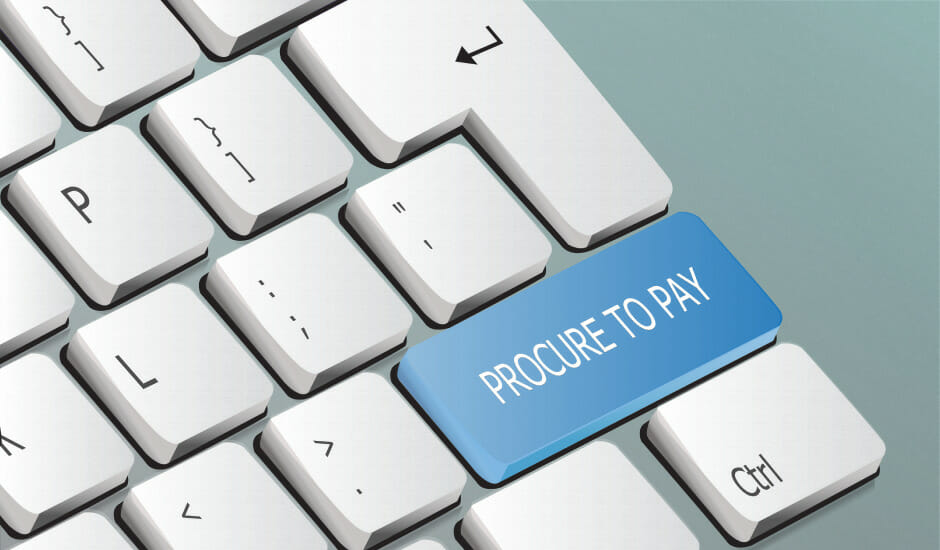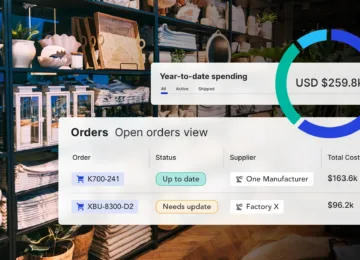As a manufacturing company, you understand the value of having clear processes in place. When your business processes are optimized, you can experience greater efficiency and productivity, better product outcomes, and keep your bottom line secure. The procure-to-pay process is just one of these areas within your business that can benefit from improvements.
Many businesses overlook procure-to-pay, but it’s absolutely vital. Below, we’ll discuss what procure-to-pay (P2P) is and how the process works. We’ll also provide some tips and best practices that you can implement to help your organization get the most out of your procure-to-pay process and achieve your internal optimization goals.
What Is Procure-to-Pay (P2P)?
Procure-to-pay, often abbreviated as P2P and sometimes called purchase-to-pay, is a business process that integrates purchasing and accounts payable systems. It spans the entire order process in a manufacturing organization, from sourcing and requisitioning to final payment.
However, the procure-to-pay process is often unorganized within a manufacturing plant. There can be a lack of communication between departments and information stored in different locations, making it difficult to track all orders and payments effectively and accurately.
How Does the Procure-to-Pay Process Work?
To know how to improve the procure-to-pay process, you must understand all of the steps that occur during the process. There are many steps, as the P2P process covers everything from ordering a product to the final payment from the vendor. Once you understand these steps and map them into your process, you can find improvement opportunities and identify inefficiencies or bottlenecks.
The Procure-to-Pay Process Flow in 9 Steps
While there will be differences between every manufacturing organization’s exact process and method of delivering goods, there are some consistent actions that apply across the board, including these nine key steps:
1) Identify Needs
A business identifies the need to procure new products, goods, or services. The procurement or buying team then determines how much should be purchased and how soon these goods need to arrive.
2) Create Requisitions
An employee makes a formal request for the identified goods or services and sends the request for approval. This could include basic standard purchases or more detailed requisitions for contract management.
3) Receive Purchase Requisition Approval
The purchase requisition is received and reviewed by department heads (and any other relevant management team members) to evaluate the purchase requisition form and ensure that it passes spend management requirements.
4) Create Purchase Orders
A purchase order, or PO, is created based on the approved purchase requisition form. It’s then issued to the supplier to put into their ERP systems.
5) Receive Purchase Order Approval
The supplier then receives the purchase request and verifies it to ensure that it meets all compliances — and that the order is legitimate. Order fulfillment can begin once the purchase order is approved, starting the cash flow process.
6) Provide a Goods Receipt
After the supplier delivers the goods to the buyer, the buyer inspects the products to ensure they meet standards and comply with any legal or contractual terms. The buyer then creates a goods receipt and verifies it against the purchase contract or the purchase order slip.
7) Gather Supplier Performance
The buyer evaluates supplier performance based on delivery accuracy and quality of goods or services. This evaluation includes factors like on-time delivery, compliance, responsiveness, etc.
8) Receive Invoice Approval
After the goods receipt is approved, the buyer can perform a three-way match between the invoice, purchase order, and goods receipt to ensure there are no discrepancies. If there are inaccuracies, the three-way matching process will catch them. This way, you can adjust any payment requirements before sending the invoice to your accounts payable department.
9) Receive Vendor Payments
The final step of the procure-to-pay process is invoice payment. This concludes the process and the contract terms. However, it is important to track payments to ensure that late payments don’t come through for purchase orders.
Best Practices for the Procure-to-Pay Process
Now that you understand the steps in the procure-to-pay process let’s look at a few best practices that can help you create a better P2P method and track your results more accurately.
Build Strong Supplier Relationships
Having strong supplier relationships is one of the best ways to improve your procure-to-pay and supply chain management processes. A good relationship can lead to cost savings, earn you better deals, improve efficiency, and foster a happier and more engaged team.
Be Open and Transparent About Your P2P Process
A transparent procure-to-pay process is important for many reasons:
- Improves your supplier relationships
- Ensures that your data is traceable and clear for any auditor or inspector
- Improves communication and collaboration between suppliers and buyers
- Improves workflow within procurement department and optimizes payable processes
Utilize the Right P2P Tools
Trying to use manual processes to track your procurement process can be overwhelming. It’s tedious work to keep track of purchase orders, invoices, and receipts by hand. Manual processes also rely on communication between different internal departments — which can slow things down and make it even harder to get the data you need. Procure-to-pay software solutions can give real-time insights into your process. You can leverage this real-time data to improve the purchasing process and make invoice processing easier for your procurement team.
The right P2P tool, like supply chain management software or enterprise resource planning (ERP) software, will use automation to track the critical data needed for your procure-to-pay process. Additionally, it will provide more actionable insights for optimizing your process and improving supplier relations.
Optimize Your Supply Chain Processes With Anvyl
The procure-to-pay process is essential to creating a streamlined payable system, and is an integral part of ensuring that your customers get their orders on time. Without a clear process in place, you risk fractured procedures that make it difficult to track payments and goods shipments. However, with the right software by your side, you can easily track your organization’s procure-to-pay process to see exactly where your team can make improvements.
Anvyl is a supply chain management tool that helps manufacturers streamline their processes and organize information in a single database. Request a demo today to learn more about what Anvyl can do for your organization.



